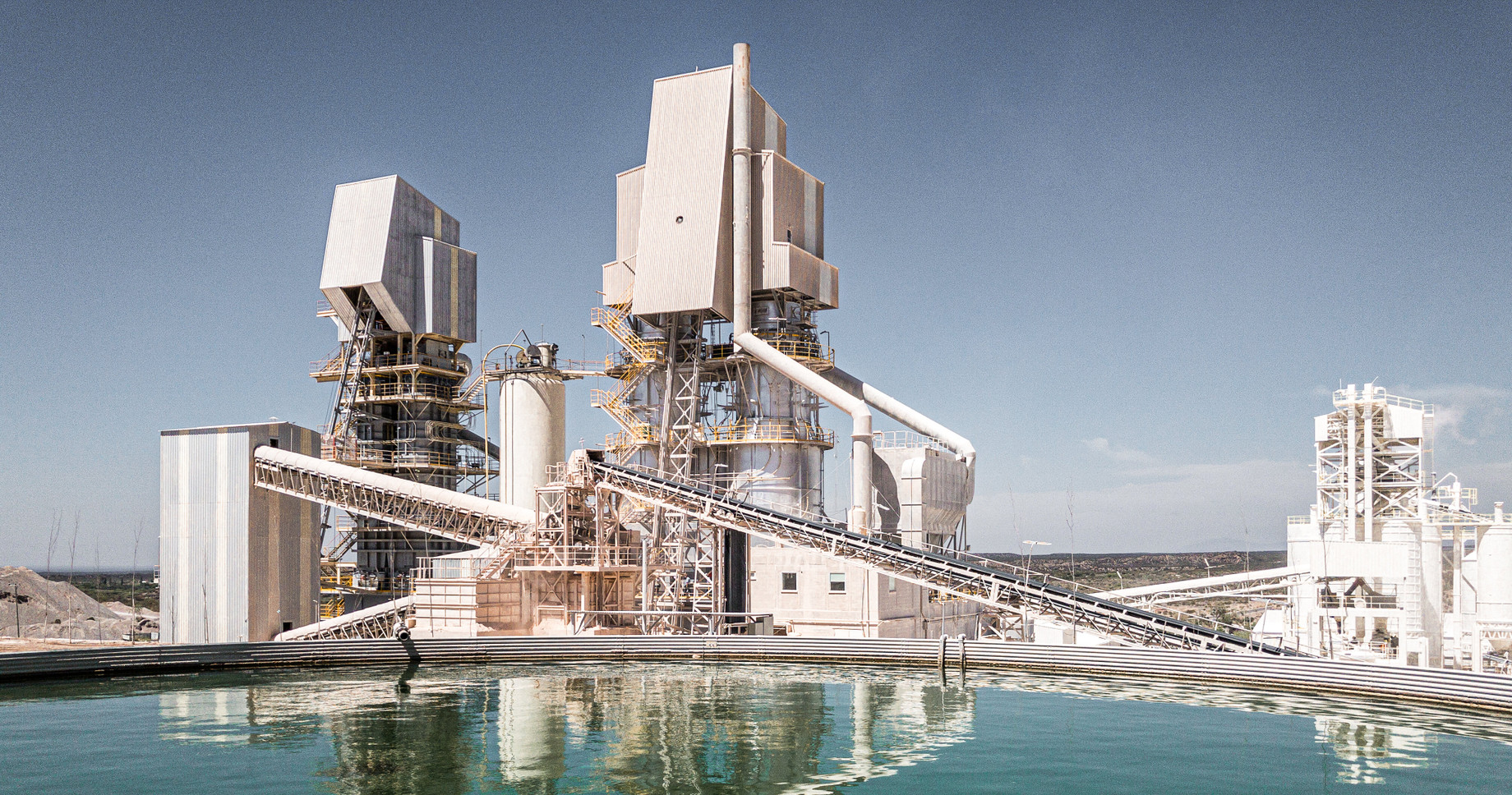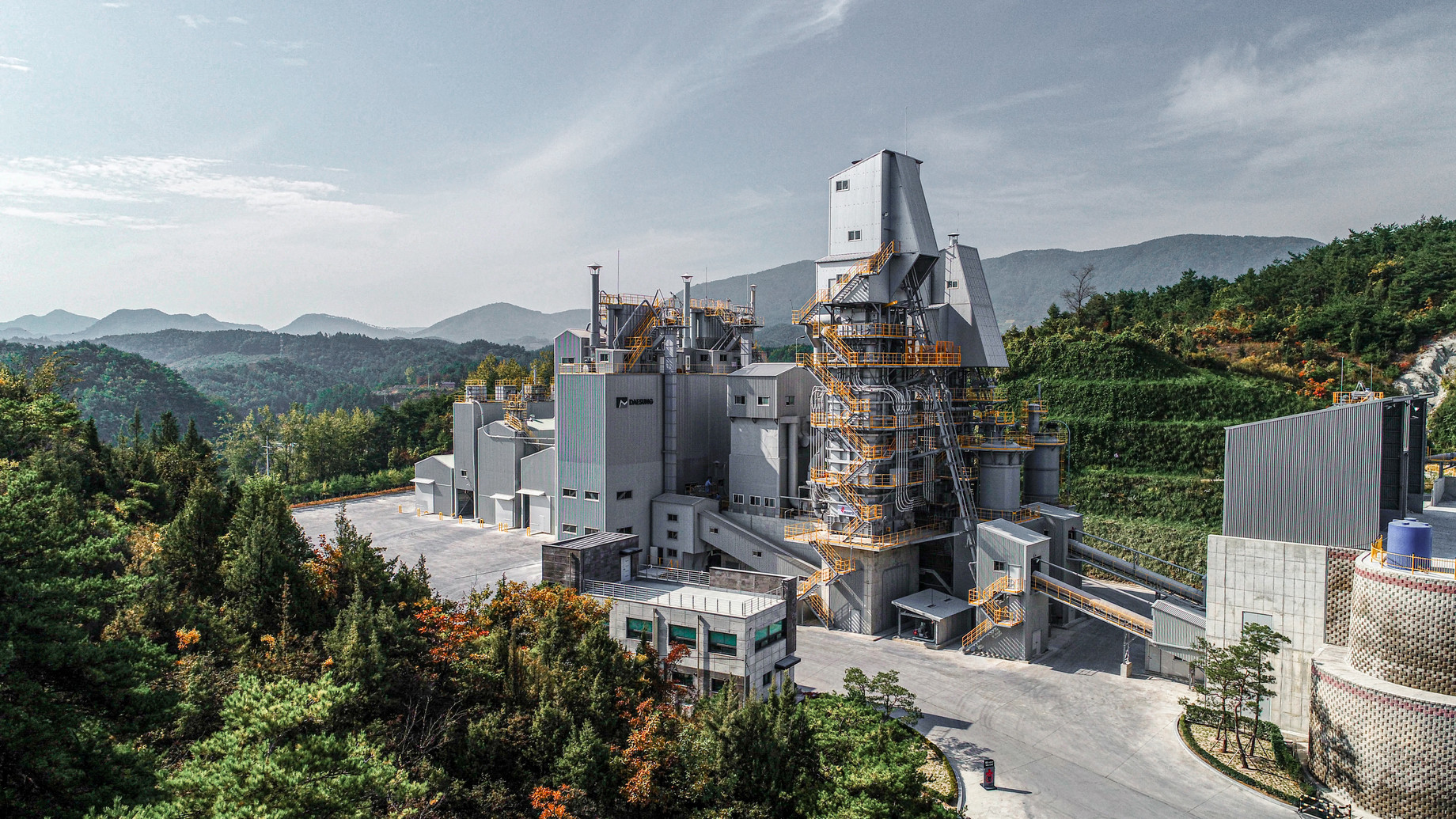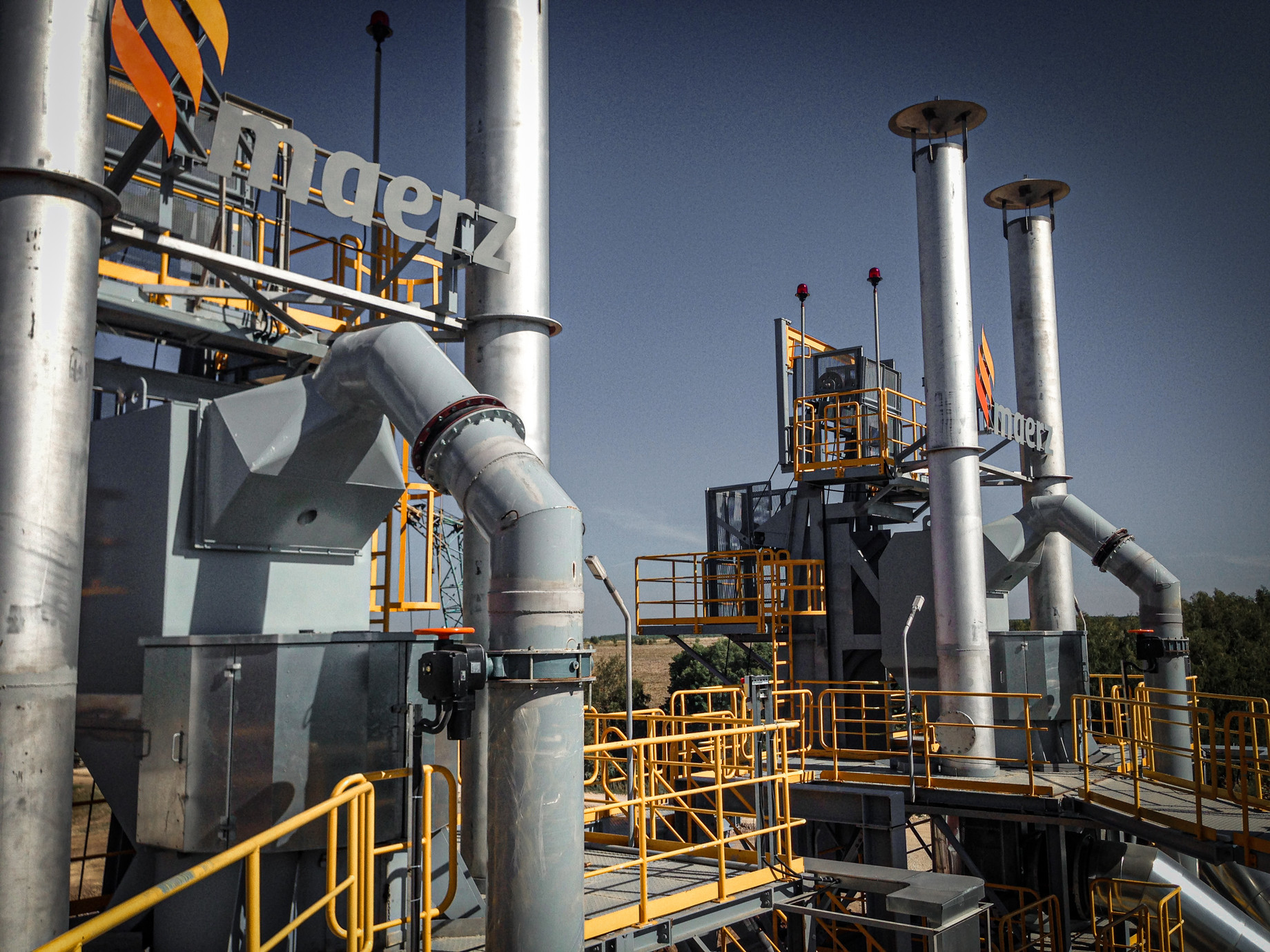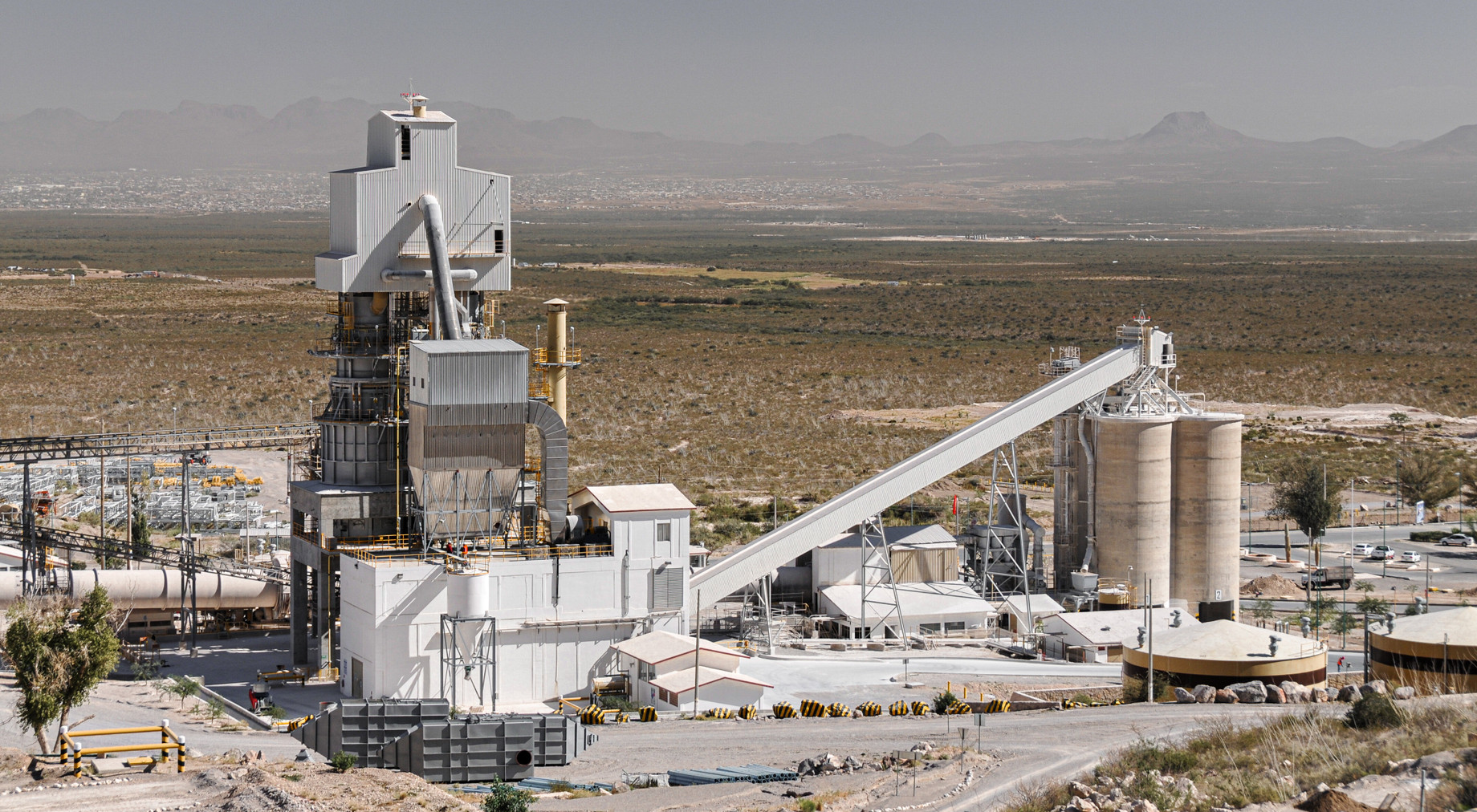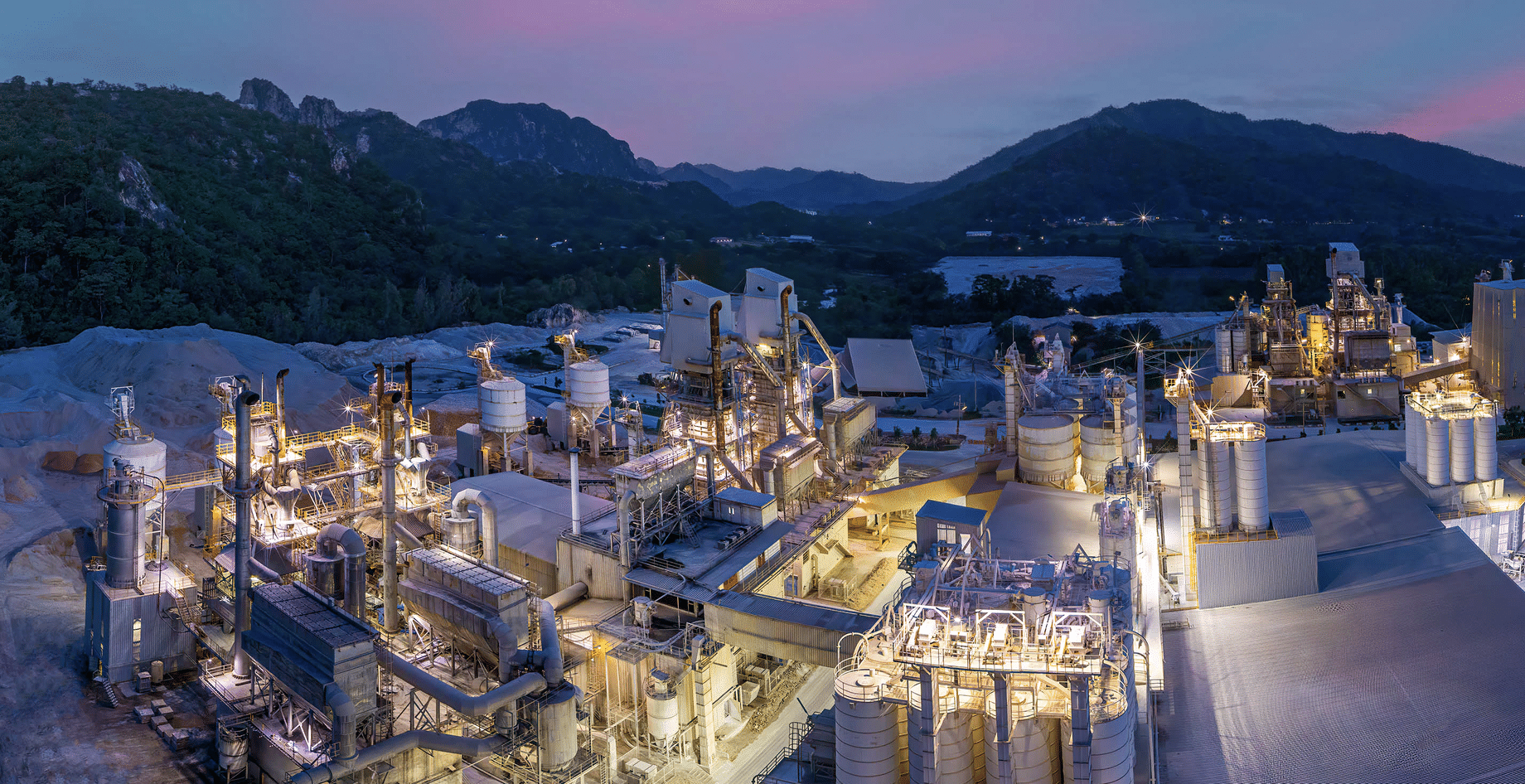Maerz lime kilns
We have been building kilns for the lime industry for over 60 years. The principle of the Maerz PFR kiln has become a classic.
Maerz sets standards in the lime industry.
How the PFR kiln works
Click on the "Play" icon in the graphic to learn more about the respective process step.
A PFR (Parallel Flow Regenerative) kiln has two vertical shafts with a connecting crossover-channel. Both shafts work together: one calcines the product, the other preheats the kiln feed.
This process works in cycles, switching the functionality of the shafts from “burning shaft” to “regenerative shaft” every 10-15 minutes.
In the burning shaft, combustion air is introduced at the top of the kiln and absorbs heat in parallel flow from the limestone fill in the preheating zone, which, in turn, was heated by the process gas in the previous cycle.
The fuel is fed from the top through vertical lances arranged evenly across the cross-section of the shaft. At the lower end of the lances, the fuel meets the combustion air and is ignited – this is also where the preheating zone ends and the combustion zone begins.
In the cooling zone, cooling air is supplied in counterflow to the lime fill. The gas coming from the burning zone and the cooling air are mixed together at the upper end of the cooling zone and are lead via a crossover-channel (connecting channel) to the other shaft, which is operating in “regenerative mode”.
In the kiln, combustion air is supplied to the preheating zone, uniform combustion is achieved in the burning zone and cooling of the lime takes place in the cooling zone.
One of the main advantages of this kiln, is the use of the heat in the mixture of process gas and cooling air, by leading the gas to the regenerative shaft and transferring the heat, in counter flow, to the limestone feed in the regenerative shaft’s preheating zone.
In the preheating zone of the regenerative shaft, the hot process gas heats the limestone in counter-flow and, in consequence, cools down.
The heat in the limestone in the preheating zone is transferred to the combustion air in the following cycle.

A PFR (Parallel Flow Regenerative) kiln has two vertical shafts with a connecting crossover-channel. Both shafts work together: one calcines the product, the other preheats the kiln feed.
This process works in cycles, switching the functionality of the shafts from “burning shaft” to “regenerative shaft” every 10-15 minutes.
In the burning shaft, combustion air is introduced at the top of the kiln and absorbs heat in parallel flow from the limestone fill in the preheating zone, which, in turn, was heated by the process gas in the previous cycle.
The fuel is fed from the top through vertical lances arranged evenly across the cross-section of the shaft. At the lower end of the lances, the fuel meets the combustion air and is ignited – this is also where the preheating zone ends and the combustion zone begins.
In the cooling zone, cooling air is supplied in counterflow to the lime fill. The gas coming from the burning zone and the cooling air are mixed together at the upper end of the cooling zone and are lead via a crossover-channel (connecting channel) to the other shaft, which is operating in “regenerative mode”.
In the kiln, combustion air is supplied to the preheating zone, uniform combustion is achieved in the burning zone and cooling of the lime takes place in the cooling zone.
One of the main advantages of this kiln, is the use of the heat in the mixture of process gas and cooling air, by leading the gas to the regenerative shaft and transferring the heat, in counter flow, to the limestone feed in the regenerative shaft’s preheating zone.
In the preheating zone of the regenerative shaft, the hot process gas heats the limestone in counter-flow and, in consequence, cools down.
The heat in the limestone in the preheating zone is transferred to the combustion air in the following cycle.

